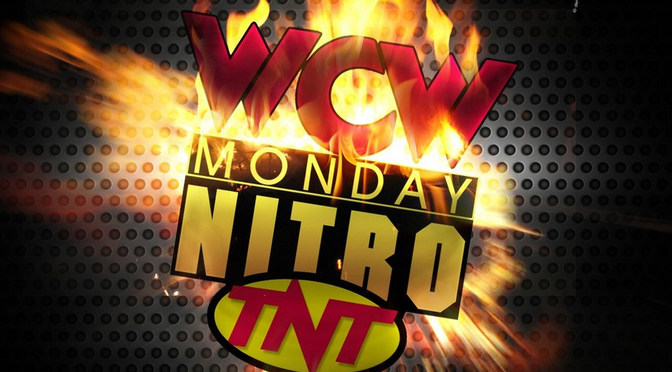Subscribe to the podcast via: iTunes | RSS Feed | Email Newsletter
WCW Television had regressed hugely in many ways in the few years prior. Not necessarily in terms of quality (1995 had seen a marked improvement), but in terms of the money spent. Production values went up as WCW bought all of their tapings in a sound stage in Orlando. It was sterile, it was cheap, it sometimes involved taping literally months of television over the course of three or four days. Most importantly though for Eric Bishoff, who was making good ground rising up the company, it bought the costs down and made it look visually more impressive.
What's interesting was that nothing really seemed to change come 1995. Sure, Bischoff was under pressure to force the company to make a profit, but in the 12 months prior the company had successfully added Hulk Hogan to their roster, broke the television viewership record at the August Clash of the Champions, and seen a significant improvement in pay per view revenue - even if that was offset by the fortune they were paying Hogan.
But taking on a new television show actually wasn't on paper a massively great idea. One thing lost in history was that Raw in the two months prior had twice broken their best rating record (once for a show headlined by Bam Bam Bigelow vs Diesel for the WWF Title in April, and once for Undertaker vs Jeff Jarrett in May). History will show 1995 to be the nadir for the WWF, but TV ratings were doing quite well. Raw had been going for over two years by this stage, and had an established audience.
READ MORE: Before The Monday Night War
Running up against Raw really should've been suicide for WCW. In the days before digital recording at best the company would be taking the existing Monday Night Raw audience and splitting them across two shows. At worst they would just find it really difficult to make any kind of impact compared to Raw.
Even in June, when the idea was first announced, it was clear WCW were using this as their big show. Prime time on Cable on Monday Night was a better slot than anything they had, and the initial idea was that they would use it to present big TV matches. Again, a great idea but it's not like WCW had a massive amount of star power to go around.
The fabled meeting that involved Bischoff and Ted Turner is seemingly no more complex than the surface suggests. Bischoff was asked by Turner what it would take to compete with the WWF (and don't be mistaken, things were bubbling under between both companies), Bischoff responded in hope more than expectation that the way to go was to go head to head with Raw on cable TV. As Bruce Mitchell implied in his PW Torch column at the time, Bischoff might have not been happy that Turner accepted his request.
What had Bischoff done? Business was hardly storming in 1995 but things were pointing in the right direction with Hogan in charge (or at least a direction that was driving the right metrics even if it was killing the quality of the product). Their TV was mass produced, and cheap. At five hours per week, they were producing a lot of (mostly irrelevant) television. Could another show help that?
And what for Bischoff himself? He'd found a lot traction within the company presenting some quite smart and well thought out decisions. Running against the WWF's big show - which as a success was trending upstream against a torrent of other failing metrics - was a huge move. Would that have translated to a second show? There was hardly a tremendous amount of evidence that it would.
The announcement presented a ton of questions, and very few obvious answers. The strength of WCW's recent run had come pretty much solely off of Hogan. The quality of anything much below the main event had nose-dived as a result of Hogan directing things. Hogan also wasn't a regular on WCW TV (wrestled very, very infrequently and most appearances were pre-tapes). Could a new dynamic show work without Hogan appearing regularly?
This would also precipitate a land-grab for talent. WWF were looking at Chris Benoit in June, and had spoken to Sabu when he was reviewing his options. Basically we were looking to ECW. And when you look at their talent base at the time: Douglas, Cactus Jack, Terry Funk, Chris Benoit, Dean Malenko, The Public Enemy, Sandman and Eddy Guerrero - WCW would soon be signing up everyone who they hadn't burned bridges with (Funk/Jack).
As we would soon see though, WCW stumbled across an idea where they could pick up guys unhappy in the WWF and make them instantly mean more. Lex Luger’s story is well told, and he was never a top guy, but Luger rocking up on the first Nitro was a killer statement. In WCW’s case, it wasn’t actually being better, it was more convincing people they were. By the end of 1995, for as much as the WWF’s failure as their success, everyone would believe it. Nitro was off and running.

 RSS Feed
RSS Feed